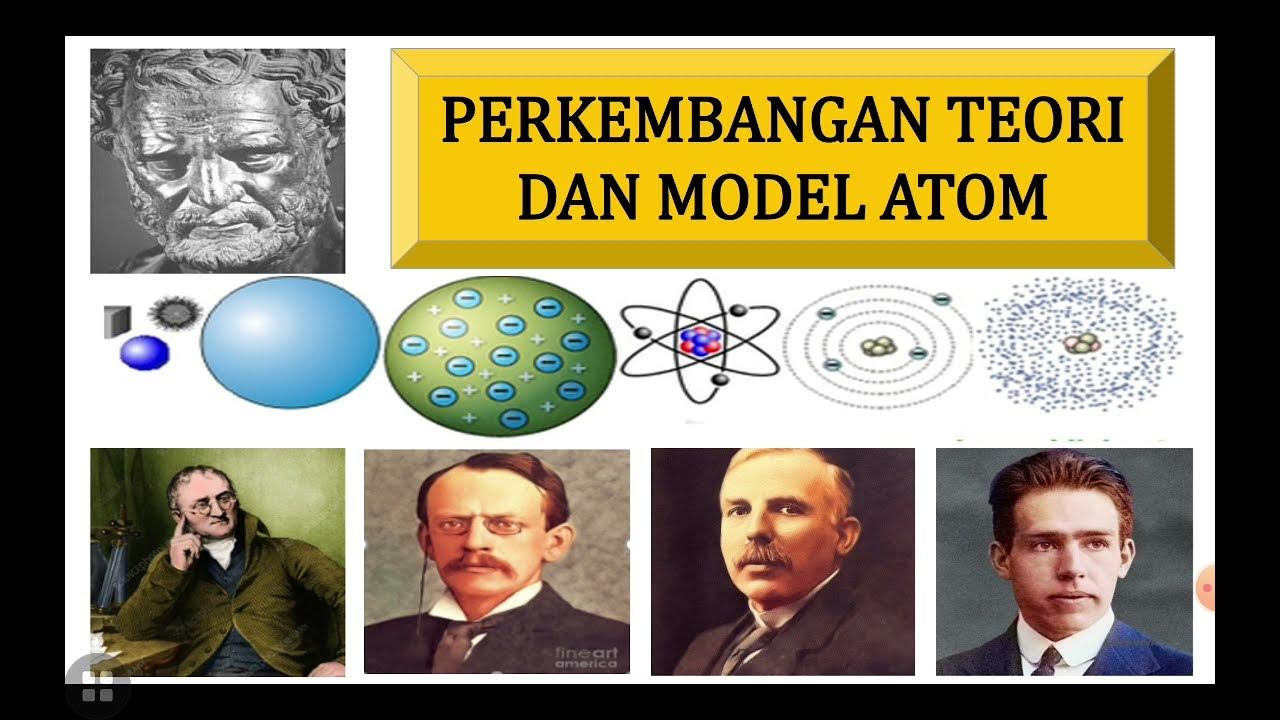Chemistry & Physics: History of the Atom (Dalton, Thomson, Rutherford, and Bohr Models)
Summary
TLDRThis video provides an engaging overview of the evolution of atomic theory, starting with John Dalton's Atomic Theory in 1803. It traces major discoveries, including J.J. Thomson's identification of electrons in 1897, Ernest Rutherford's revelation of the atomic nucleus in 1909, and Niels Bohr's solution to the atom's structural problem through his planetary model in 1913. The Bohr model explained how electrons occupy specific orbits, determining an element’s chemical properties. Though influential, this model was later replaced by the more advanced quantum mechanical model, to be discussed in future content.
Takeaways
- 🔬 The Atomic Age began with John Dalton's proposal of the Atomic Theory in 1803.
- 🌐 Dalton's model suggested that elements combined in whole-number ratios due to their indivisible atoms.
- 📉 Dalton's theory was that each element had a unique, solid, and indivisible atom with a characteristic weight.
- 🔍 The discovery of subatomic particles like electrons by J.J. Thomson in 1897 challenged Dalton's model of indivisible atoms.
- 🍮 Thomson proposed the 'plum pudding' model of the atom, with a positively charged 'cake' and negatively charged 'raisins' (electrons).
- 💥 Rutherford's gold foil experiment in 1909 revealed that atoms have a small, dense, positively charged nucleus.
- 🌌 This led to the understanding that atoms are mostly empty space with a concentrated mass in a tiny nucleus.
- 🪐 Niels Bohr introduced the 'planetary model' of the atom, suggesting electrons orbit the nucleus in fixed energy levels.
- 🚀 Bohr's model explained the concept of 'quantum leap', where electrons jump between energy levels, gaining or losing discrete energy packets.
- 🌟 Valence electrons, those in the outermost orbit, determine an element's chemical properties, as explained by the Bohr model.
- 🔮 The quantum mechanical model later replaced the Bohr model, offering a more comprehensive understanding of atomic structure.
Q & A
What is the significance of John Dalton’s work in the context of atomic theory?
-John Dalton proposed the Atomic Theory in 1803, which stated that all matter is composed of atoms. His theory helped explain chemical reactions, particularly the observation that elements always combine in simple whole-number ratios to form compounds. This was the foundation of atomic science for almost a century.
What were the key features of Dalton’s atomic model?
-Dalton’s atomic model suggested that atoms were indivisible, solid particles and that each element had its own unique type of atom with a specific weight. His model did not account for subatomic particles, as these were discovered much later.
How did J.J. Thomson's discovery of the electron challenge Dalton's model?
-J.J. Thomson’s discovery of the electron in 1897 demonstrated that atoms were not indivisible, as Dalton had proposed. Thomson found that cathode rays were made of negatively charged particles (electrons), which were much smaller and lighter than atoms, forcing scientists to rethink the structure of the atom.
What was Thomson's 'plum pudding' model of the atom?
-Thomson’s 'plum pudding' model suggested that the atom consisted of a positively charged 'pudding' or bulk, with negatively charged electrons embedded within it like raisins in a cake or chocolate chips in a muffin. This model stood for about a decade.
What experiment led to the downfall of the 'plum pudding' model?
-Ernest Rutherford’s 1909 gold foil experiment disproved the 'plum pudding' model. His experiment showed that alpha particles could pass through gold foil, but some were deflected back, indicating that atoms have a small, dense, positively charged nucleus rather than being a uniform mass.
How did Rutherford's nuclear model change our understanding of the atom?
-Rutherford’s model proposed that atoms are mostly empty space, with a small, dense, positively charged nucleus at the center that contains most of the atom’s mass. This nucleus is surrounded by electrons, which move through the empty space.
What problem did Rutherford’s model present regarding electron behavior?
-Rutherford’s model raised the question of why electrons, being negatively charged, did not collapse into the positively charged nucleus due to electrostatic attraction. This problem required further refinement of the atomic model.
What was Niels Bohr’s solution to the issue of atomic collapse in Rutherford’s model?
-Niels Bohr solved the issue by suggesting that electrons orbit the nucleus in fixed, circular paths or energy levels. Electrons could jump between these energy levels, but they could not exist between them, preventing the atom from collapsing.
How did Bohr’s model explain chemical properties of atoms?
-Bohr’s model explained that the electrons in the outermost orbits, called valence electrons, determine an element’s chemical properties. The arrangement of these electrons at fixed energy levels helps explain why different elements have different reactivity.
What is the term 'quantum leap' and how does it relate to the Bohr model?
-The term 'quantum leap' comes from the Bohr model, where electrons jump from one energy level to another without being found in between. Each jump involves the absorption or release of a discrete amount of energy, called a 'quantum.'
Outlines

This section is available to paid users only. Please upgrade to access this part.
Upgrade NowMindmap

This section is available to paid users only. Please upgrade to access this part.
Upgrade NowKeywords

This section is available to paid users only. Please upgrade to access this part.
Upgrade NowHighlights

This section is available to paid users only. Please upgrade to access this part.
Upgrade NowTranscripts

This section is available to paid users only. Please upgrade to access this part.
Upgrade NowBrowse More Related Video
5.0 / 5 (0 votes)





